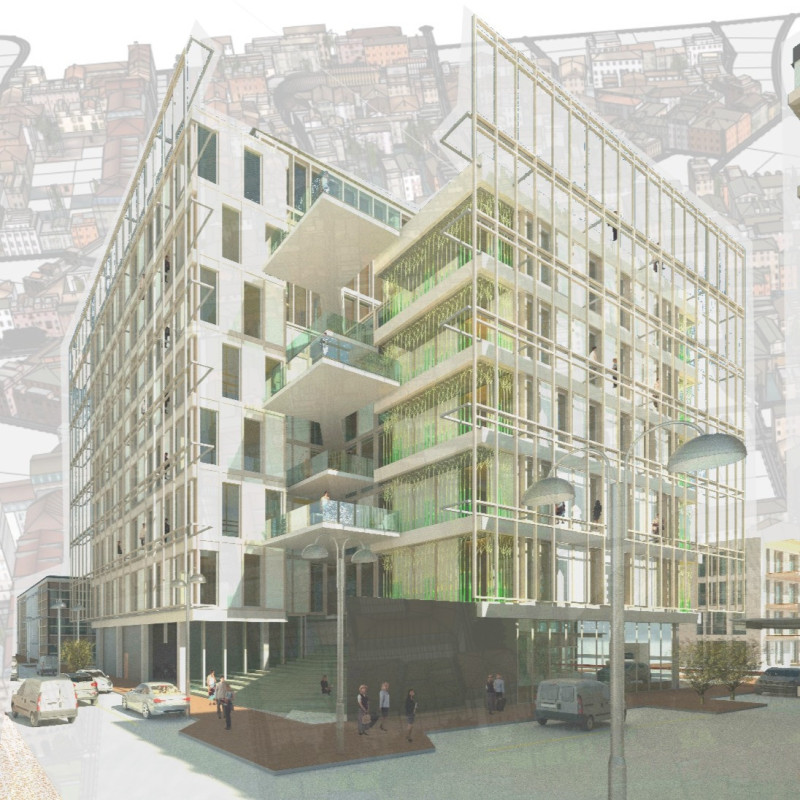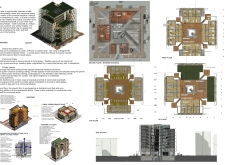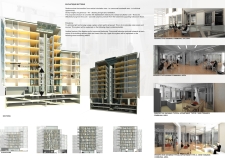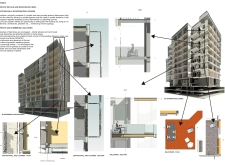5 key facts about this project
This project serves primarily as a residential complex, aimed at accommodating a diverse range of inhabitants while fostering interactions among residents. The design incorporates various communal spaces and amenities, motivating a sense of community within the urban fabric. The use of contemporary architectural techniques alongside traditional Roman elements highlights the project’s commitment to maintaining the integrity of its location.
Integration of Central Circulation and Community Spaces
A notable aspect of this project is the central circulation core that consists of stairs, lifts, and shallow ramps. This design element enhances the efficiency of movement within the building while serving as a social interface for residents. The core is a vital feature that encourages residents to interact as they navigate through the space, supporting both accessibility and community living.
In addition to the core, the project uniquely integrates flexible communal areas, including dining spaces and gathering spots. These spaces have been strategically placed to ensure they are accessible from various points in the building, promoting regular use and community interaction. The apartments are designed with an emphasis on private outdoor spaces, such as balconies and terraces, facilitating personal enjoyment while contributing to the overall communal atmosphere.
Sustainable Design and Material Selection
The project prioritizes sustainability through thoughtful material selection and environmental design practices. Reinforced concrete serves as the main structural element, providing durability and stability. The facade features a glass curtain wall that enhances natural light penetration while integrating solar panels to support energy efficiency.
The design also incorporates a green roof, which contributes to thermal regulation and promotes local biodiversity. The combination of aluminum and anodized bronze accents in the facade adds a modern aesthetic while ensuring long-term resilience against weather.
The architectural outcome presents a unique approach by balancing contemporary requirements with contextual sensitivity. The project's configuration allows for an optimal density of approximately 200 units per hectare, aligning with urban development goals. The integration of private and communal areas within the block effectively redefines the residential experience in an urban context.
For a detailed exploration of this architectural project, including architectural plans, architectural sections, and architectural designs, readers are encouraged to examine the provided presentation. This analysis offers insights into the unique architectural ideas and design approaches that shape the residential experience in this urban setting.


























